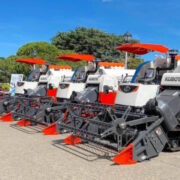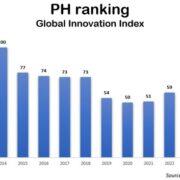
The Department of Agriculture through the Philippine Center for Postharvest Development and Mechanization (PhilMech) is on track in providing rice farmers appropriate machinery and equipment under the Duterte administration’s Rice Competitiveness Enhancement Fund (RCEF) program.
“We will continue to boost farm mechanization to reduce production costs, enable our rice farmers produce more harvests, earn bigger incomes, and subsequently compete with their counterparts in ASEAN,” said Agriculture Secretary William Dar.
To date, the DA-PhilMech has procured and currently distributing 2,938 farm machinery and equipment worth P2 billion (B) to 625 RCEF-accredited farmers’ cooperatives and associations (FCAs) nationwide.
The second batch of 4,996 units — worth P3B under the P5-B RCEF farm mechanization component for 2019 — is under a bidding process and expected to be completed by July 31, 2020, said DA-PhilMech director Baldwin Jallorina. Thereafter, the farm machines and equipment will be given to the second batch of 1,068 FCAs.
For the 2020 P5-B RCEF farm mechanization budget, Jallorina said the DA-PhilMech has to date validated 2,587 FCA applicants, of which 1,259 FCAs have been shortlisted and qualified to receive 4,543 farm machineries.
“With the sustained and vigorous implementation of the RCEF program, coupled with our Rice Resiliency Project (RRP), we expect Filipino rice farmers to be at par with their counterparts in the ASEAN, in terms of cost efficiency and productivity, in the next three years,” the DA chief said.
Currently, Filipino farmers spend an average of P10 on labor, seeds, fertilizers, and other inputs to produce one kilogram (kg) of palay (paddy rice), while the country’s average harvest is at four metric tons (MT) per hectare (ha).
Farmers in Thailand and Vietnam spend an equivalent P8/kg and P5/kg, respectively, to produce one kilo of palay.
Studies conducted by the DA-PhilMech and Philippine Rice Research Institute (PhilRice) show that the country’s high production cost is attributed to several factors, namely: heavy reliance on manual operations from land preparation to harvesting; high cost of farm inputs, notably fertilizers; lack of irrigation; inaccessible and inadequate credit; usurious loans offered by traders; and low productivity.
“We are confident that with appropriate interventions and assistance under RCEF and RRP, we can reduce our production cost to P8 per kilo and increase our national average yield to six tons per hectare, in the next three years,” said Secretary Dar.
“Further, to take optimum advantage of the Duterte administration’s farm mechanization program, we will strongly encourage RCEF farmers to collectivize, and consolidate their farms into contiguous clusters of at least 50 to 100 hectares each,” the DA chief added.
In fact, Jallorina said the DA-PhilMech prioritizes provision of assistance to clustered FCAs.
“Farm consolidation and clustering is one of the major features of a modern, industrialized, market-driven, sustainable and resilient Philippine agriculture,” Secretary Dar said.
“In all, we need to raise the productivity and incomes of Filipino farmers to enable them to cope with the COVID-19 crisis,” he added said.
“Rest assured, the DA family will do its utmost to propel the agriculture sector as a major player in the nation’s economic recovery efforts,” concluded Secretary Dar.
—
Stay updated with news and information from the Department of Agriculture by visiting their website at https://www.da.gov.ph.






